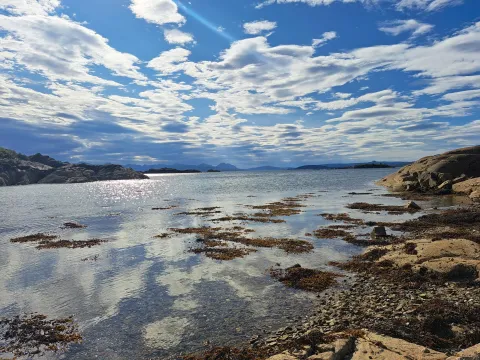
CREW Code: CRW2022_02
Theme: Hydrological Extremes, Coasts and Risk Management
Project status: Project complete. Click here to visit the publication page to view the project outputs.
Type of project: Capacity Building
Lead research team: Heriot-Watt University
Coastal flooding and erosion are increasing problems around the Scottish coastline resulting from climatic changes such as increased storm frequency and intensity, as well as rising sea levels. These pose risks to human life, infrastructure and properties, with negative consequences for the national economy. Besides ecosystem services such as habitat for threatened and commercial species, fisheries production, nutrient cycling, sediment stabilisation, water purification and carbon storage, marine vegetation canopies and shellfish habitats can dampen waves and currents, with the possibility of reducing risk of coastal flooding and erosion. However, there is a lack of consolidated information relating to the distribution and extent of such habitats at a national scale. In addition, evaluation of the potential for Natural Flood Management (NFM) by these habitats in a Scottish context has not been done. The project set out to address these knowledge gaps by focusing on 4 key habitats: kelp forests; seagrass beds; oyster reefs; and blue mussel beds.
The project aimed to evaluate how well selected shallow marine habitats (specifically kelp forests, seagrass beds, oyster reefs and blue mussel beds) protect the Scottish coastline from erosion and flooding. Consequently, a secondary aim was to assess the need and feasibility for protection and/or restoration of these habitats in relation to their potential role in Natural Flood Management (NFM) and erosion control.
The following research tasks were undertaken:
1. Gathering and standardising available information on the location and extent around Scotland’s coast of the 4 habitats.
2. Predicting the reduction of waves and wave run-up by the 4 habitats using recently developed computer simulations.
3. Applying these predictions to specific Scottish locations to assess the degree of flood and erosion control by these habitats.
4. Acquiring information from stakeholders through a workshop to inform the project direction.
5. Assessing the effects of harvesting on the 4 habitats.
6. Assessing the potential for coastal protection through restoration of the 4 habitats.
This project has completed. Click here to visit the publication page to view the project outputs.